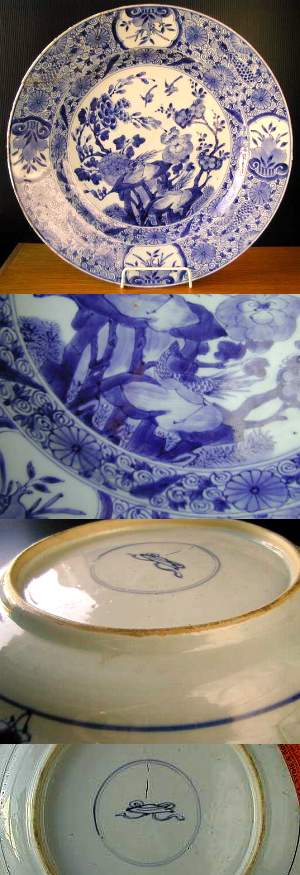
This page is only one of many thousands of Gotheborg.com Help and Information Pages, offering specialized knowledge on Chinese and Japanese Porcelain, including a Glossary, Q&A, Chinese and Japanese Porcelain Marks, Chinese Porcelain Exhibition and Excavation reports etc. For personal help and far more information, join our Discussion Board or use 'Ask a Question' for quick email consultations. For full text and better navigation, use a full-screen device rather than a mobile phone, that offers only limited content.
 My wife and I have an antique shop in the back of beyond in the Scottish Highlands. An elderly lady came into our shop and asked my wife to go and see whether there was anything of value in the house of a recently deceased relative. There were a few items which had been of some merit but which were in bad condition. Many of the smaller contents had gone to a charity shop and there was a pile of rubbish to be sent to the tip.
My wife and I have an antique shop in the back of beyond in the Scottish Highlands. An elderly lady came into our shop and asked my wife to go and see whether there was anything of value in the house of a recently deceased relative. There were a few items which had been of some merit but which were in bad condition. Many of the smaller contents had gone to a charity shop and there was a pile of rubbish to be sent to the tip.
Amongst that rubbish was a blue-and-white charger from which a chunk had been broken and crudely replaced. My wife saw it as an object of beauty, knew that it was Oriental, and bought it with the intention of getting it properly mended and keeping it .
I would very much like to know what it is. My knowledge of Chinese and Japanese porcelain is very slight. My first reaction when I saw the colour was to say - "That looks like Kangxi".
I am less sure having looked at a few Web sites including your own. It could be earlier. Or later. I don't suppose that it is too valuable for us to keep and enjoy, fortunately.
I have removed the dust and the hanging wires but have not tried to wash it.
The white has a very slightly cream tint with a suggestion of green when compared with a sheet of paper. The diameter is just under 40 cm (15"). It weighs 2.1 kg (5 lb). The colour of the paste when viewed with a halogen lamp is white and fairly clear. I cannot see any bubbles in the glaze with a strong magnifying glass.
Some photographs are attached. I hope they show the colour of the blue. They are intended to show the undulations on the surface but are not very successful. The undulations are gentle, not orange-peeling.
Please let me know if I have missed anything out.
The charger is a very nice Kangxi piece and would in perfect condition be worth around $1500. Unfortunately is has been damaged and is in this condition not worth more than $100-200.
After a professional restoration the value will be about $300.
Considering it being a Kangxi piece my estimates might be a bit too conservative. The prices have gone up considerably on this kind of pieces in the last few years, so maybe you should add some to the figures I mention. The damage will of course always be a problem, but it is still a remarkable piece.
The front side is very Japanese "Arita" in style but the back leaves very little room for doubts.
The mark is one of the "Eight Precious Things". To use symbols like this was a common practice very typical for the Kangxi period. On my page about marks under Porcelain Information / Marks / Symbols you will find all eight of these and also some further information.
Jan-Erik Nilsson